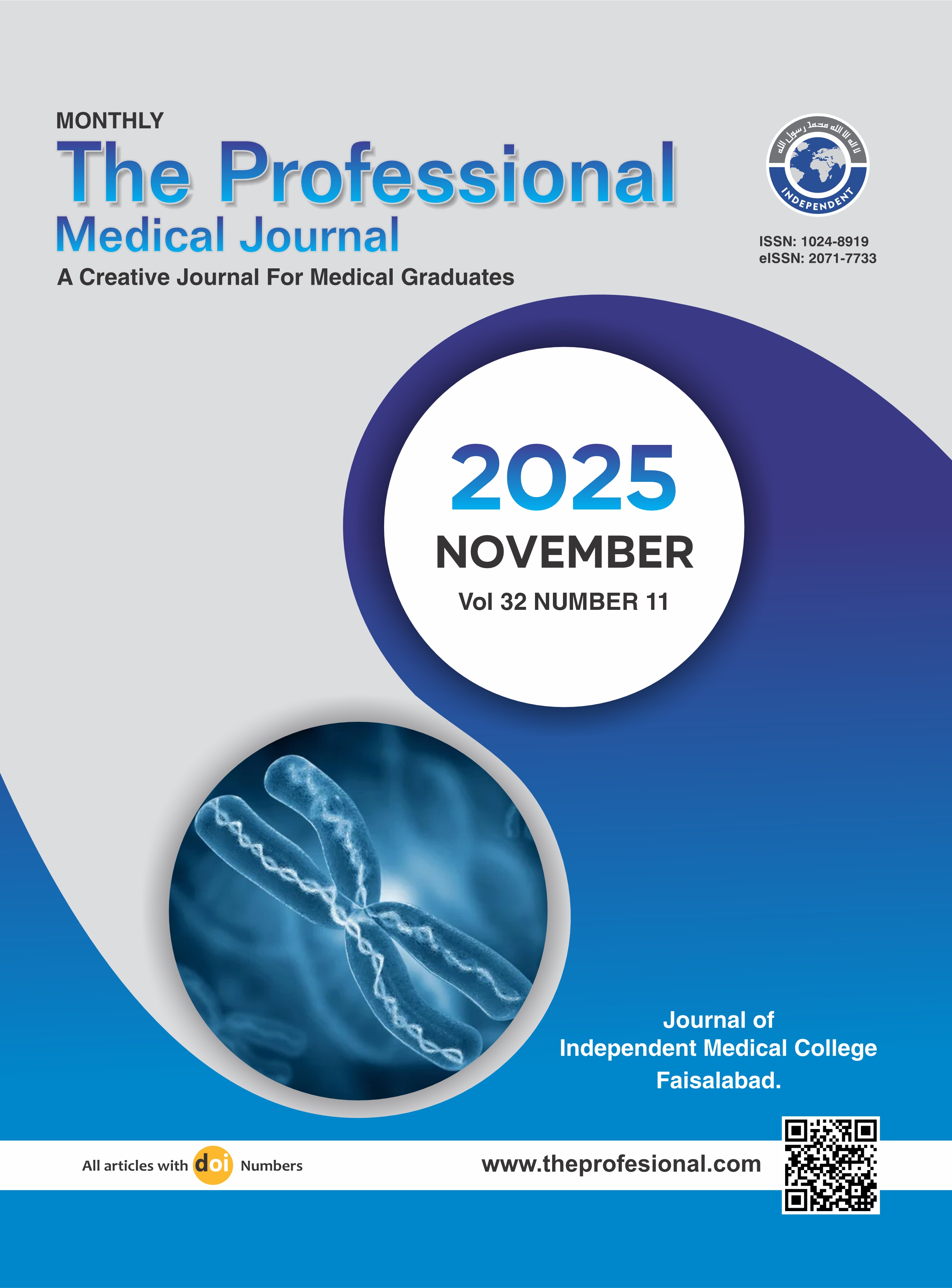Impact of biliopancreatic length following revision of sleeve gastrectomy to one anastomosis gastric bypass.
DOI:
https://doi.org/10.29309/TPMJ/2025.32.11.8307Keywords:
Biliopancreatic Length, Body Mass Index, Pediatric SurgeryAbstract
Objective: To evaluate the early Impact of Biliopancreatic Length on the outcome in revisional bariatric surgeries. Study Design: Retrospective Review. Setting: Lady Reading Hospital, Peshawar. Period: 1st March 2017 to 28th February 2022. Methods: Prospectively maintained data of 43 patients with the BMI of less than 50, who underwent laparoscopic OAGB Patients were placed in three groups including Group A 180cm, B 220cm and C 250 cm respectively corresponding to the biliopancreatic limb length. The patients were set for follow-up at 7th, 14th, 28th postoperative days for the first one month and then subsequently at 3 months and 6 months. All data was evaluated on SPSSR version 22.0 and is depicted in tabulated form. Continuous data was compared using Student t tests and Mann Whitney U test. In low figures from a 2X2 table Fischer’s exact test was performed and the significance of a test was considered as a p value of lower than 0.05. Multivariate analysis was performed to exclude confounding elements such as gender and pre-operative data. Results: A total of 43 patients were included in the study. Patients who completed 6-months of follow-up were analyzed. Preoperative weight after LSG & before REVISION OAGB were 113 ± 28.5 kg (180cm), 106.9+22.7 (220cm), 117.1+17.3 (250cm) and BMI were 45.8 +4.1 (180), 41.9 +5.3 (220cm), 44.3 +4.7 (250cm). A total of 43(%) patients attended the 6 months follow-up after revision OAGB (clinical and hematological) (group A = 18; group B = 12, group C = 13). A total of 43 (%) TWL achieved in 180 cm, 220 cm, and 250 cm groups were 27.4(+19.1), 17.8(+14), and 28.9(+9.5) respectively (p=0.81). There was no protein deficiency reported at 6 months of follow-up. Regarding albumin levels in group A at 1st,03rd & 06th month was 3.4 ±0.3, 3.3 ±0.4, & 3.6 ±0.3 respectively while Albumin in Group B at 1st, 3rd, & 6th month was reported as 3.2 ±0.4, 3.2 ±0.3, & 2.8 ±0.4 respectively and Albumin levels in Group C at 1st, 3rd, & 6th Month was 3.6 ±0.3, 3.1 ±0.4, 2.7 ±0.5 respectively(p=0.07). A significant difference was noted in the long lengths of Biliopancreatic group C with a mean figure of 22.1g/ml. (p=0.01). Conclusion: Results in terms of weight loss and its relationship to length of biliopancreatic limb while performing one anastomosis Gastric Bypass (OAGB) has no significant benefit. A modest Biliopancreatic limb length attains similar results after revision from Sleeve gastrectomy to OAGB. Adding length to the bypassed bowel confers nutritional complications especially Serum Ferritin.
Downloads
Published
Issue
Section
License
Copyright (c) 2025 The Professional Medical Journal

This work is licensed under a Creative Commons Attribution-NonCommercial 4.0 International License.


